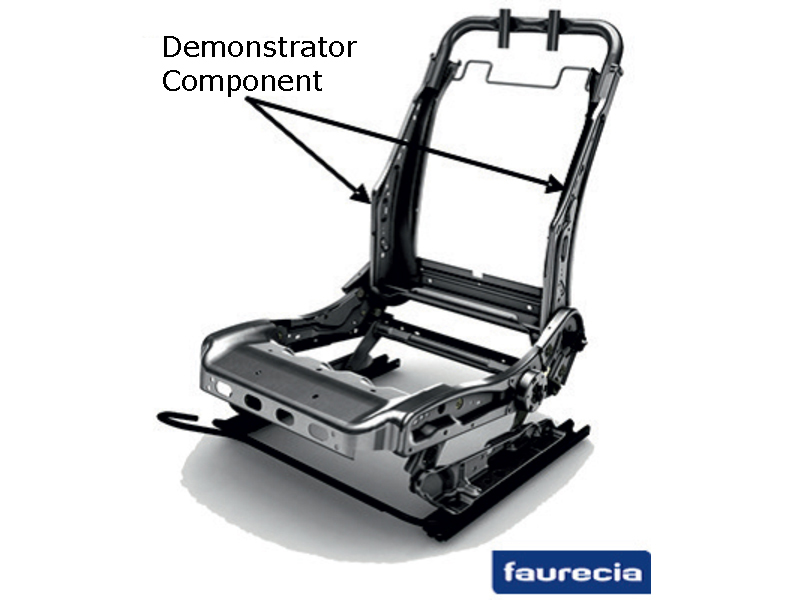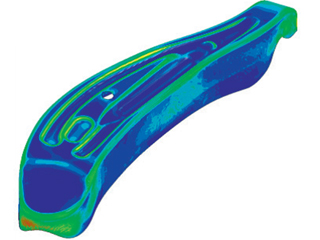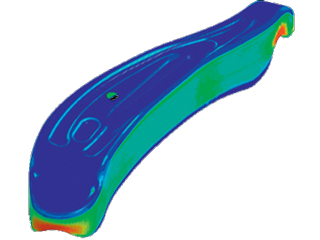Process simulation and forming simulation for components
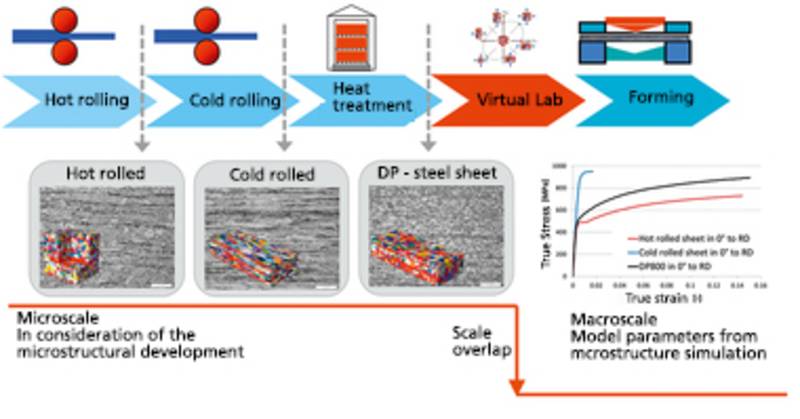
Forming process simulations
Using the most modern simulation methodologies, we optimize forming processes for our clients who require bulk forming, sheet forming, hot forming and cold forming. We identify and clarify the physical reasons for weak links that may exist in manufacturing steps – as well as the causes for these – and manage their effects and impacts in the design phase and when in actual use. On the basis of experimental testing, we analyze, determine and optimize mechanical material model approaches and state of the art simulation methods for forming processes of metallic materials. We specifically take into account the immediately preceding and subsequent manufacturing steps as well as any operational requirements, enabling our clients to exploit the full potential of optimized process steps.
Optimal design of shaping and forming processes through a coupling of experiment and simulation
Process design for sheet metal forming
- Support for the planning and design of sheet metal forming processes
- Process chain simulations
- Cutting process simulations
- Analysis of forming processes, especially dimensional accuracy, springback and forming limits
Process design and evaluation of bulk forming processes
- Cold rolling and hot rolling process simulations
- Edge crack formation predictions from rolling
- Microstructure development simulations
- Manufacturing chain simulations
- Analysis of forming processes, for example dimensional accuracy and damage
More about bulk forming processes
Parameter identification and preparation of material cards, e.g. for FE simulations
- Isotrop hardening models
- Isotrop kinematic hardening models (Bauschinger effect)
- Anisotrop yield criteria models
- Friction and wear models
- Numerical determination of characteristic values
Modeling high-strength and highly-ductile TWIP-steel sheet metals
In recent years a significant increase in research activities has been dedicated to high strength steel sheet metals. This class of steel combines the very high strength with high ductility. For example, with a tensile strength of approx. 1000 MPa, a breaking elongation of 40-50 % is reached: this is a combination of properties that cannot be achieved with conventional steels. This is one of the indicators as to why TWIP steels are so interesting to the automobile industry: by using TWIP steels, both the energy absorption of components and the structural safety of the vehicle can be significantly improved. The strength of this material allows for a reduction of the sheet thickness used in components and contributes to a more efficient use of resources.
In contrast to conventional steels, where plastic deformation occurs through the movement of dislocations, in the case of TWIP-steels an additional deformation mechanism, the so-called “twinning”, is activated. The differences in macroscopic behavior compared to conventional steels are identifiable due to the TWIP effects. Scientists at the Fraunhofer IWM have developed an appropriate material model so that the mechanical properties of TWIP steel can be accurately described. An essential characteristic of this model is the physically based description of microstructural properties and especially the development of the twin volume fractions depending on deformation and state of stress. The development of these microstructural properties is carefully considered when calculating macroscopic material behavior.
An automobile seat backrest sidemember: has, on the one hand, a complex geometry which requires a high degree of forming capacity. On the other, the component is crash relevant so the current design has been optimized in consideration of the special properties of TWIP steel using the TWIP4EU developed material model.
Results of the forming simulation: comparison between the experimental data and simulation model of the Stress-Strain-Curve and the evolution of the twin volume fractions.
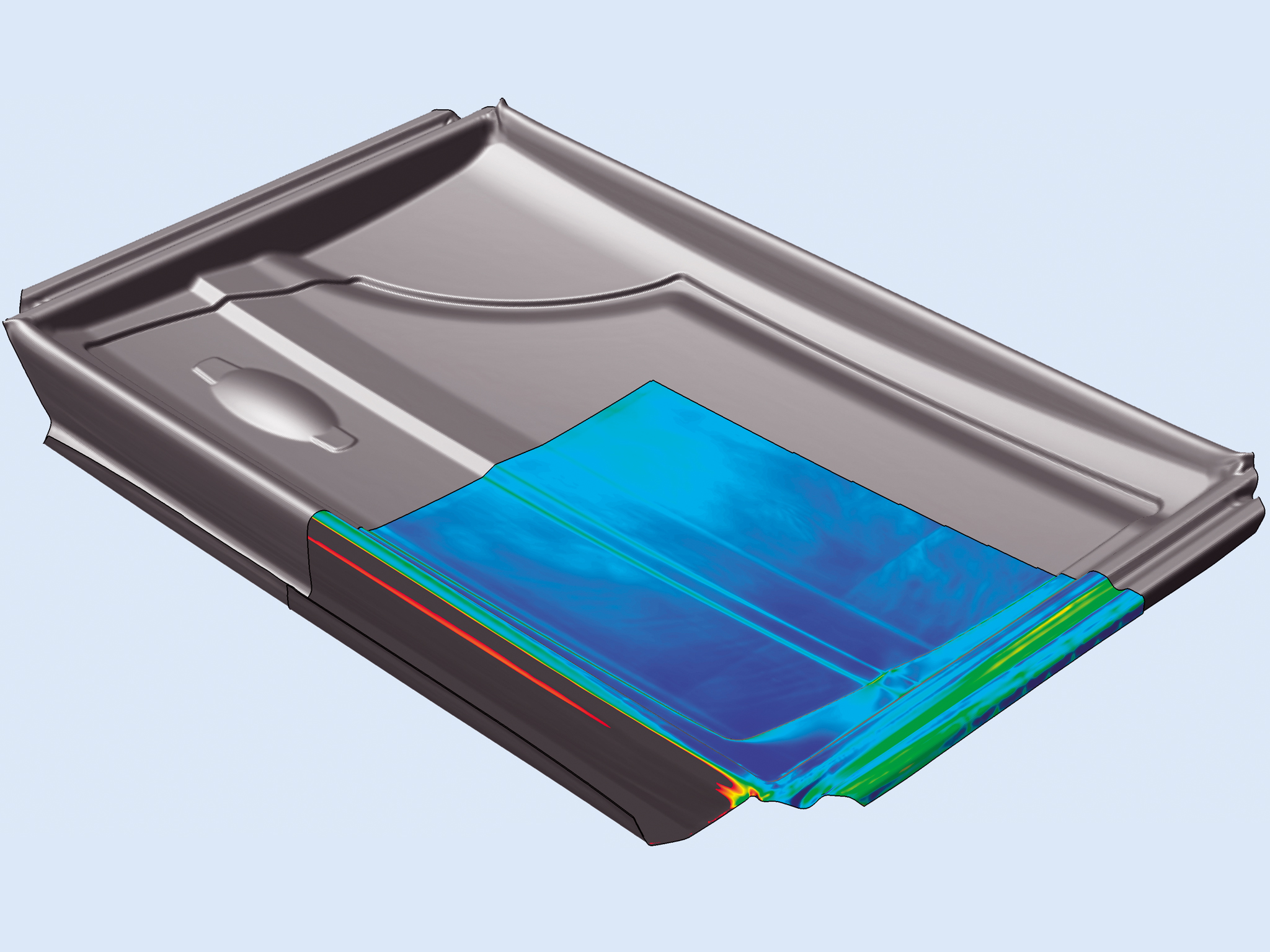
Process chain simulations
The material properties of both semi-finished parts and functioning components significantly depend upon the process parameters implemented during the manufacturing phase. By using an appropriate modeling approach, each process step can be simulated with high accuracy as a means of analyzing the influence of individual process parameters on material properties. Large benefits can be realized by linking either very similar or quite different simulation methodologies so as to virtually describe the entire process chain. This serves as an illustration of the way we apply the main principles of "Integrated Computational Materials Engineering" (ICME).
At the Fraunhofer IWM we develop methods for the linking of subsequent process steps: cold rolling simulations realized via the finite element method (FEM) are combined with heat treatment descriptions. The ensuing results are then used in microstructure simulations to predict macroscopic, mechanical characteristics which are incorporated into material models for component forming simulations.
The broad spectrum of material testing at the Fraunhofer IWM enables the acquisition of experimental data. This data is used to create and calibrate the simulation models as well as for the validation of the ensuing results. Established methods such as microstructure characterization, texture determination using EBSD and the description of mechanical and thermo-mechanical properties enable material characterization after each process step. We ensure that the experiments conform precisely to the given simulation methodology: experiments and simulations under one roof.
Publications
- Uppaluri, R.; Helm, D., A convex fourth order yield function for orthotropic metal plasticity, European Journal of Mechanics - A/Solids 87 (2021) Art. 104196; 17 Seiten Link
- Kertsch, L.; Helm, D., A thermodynamically consistent model for elastoplasticity, recovery, recrystallization and grain coarsening, International Journal of Solids and Structures 152-153 (2018) 185-195 Link
 Fraunhofer Institute for Mechanics of Materials IWM
Fraunhofer Institute for Mechanics of Materials IWM